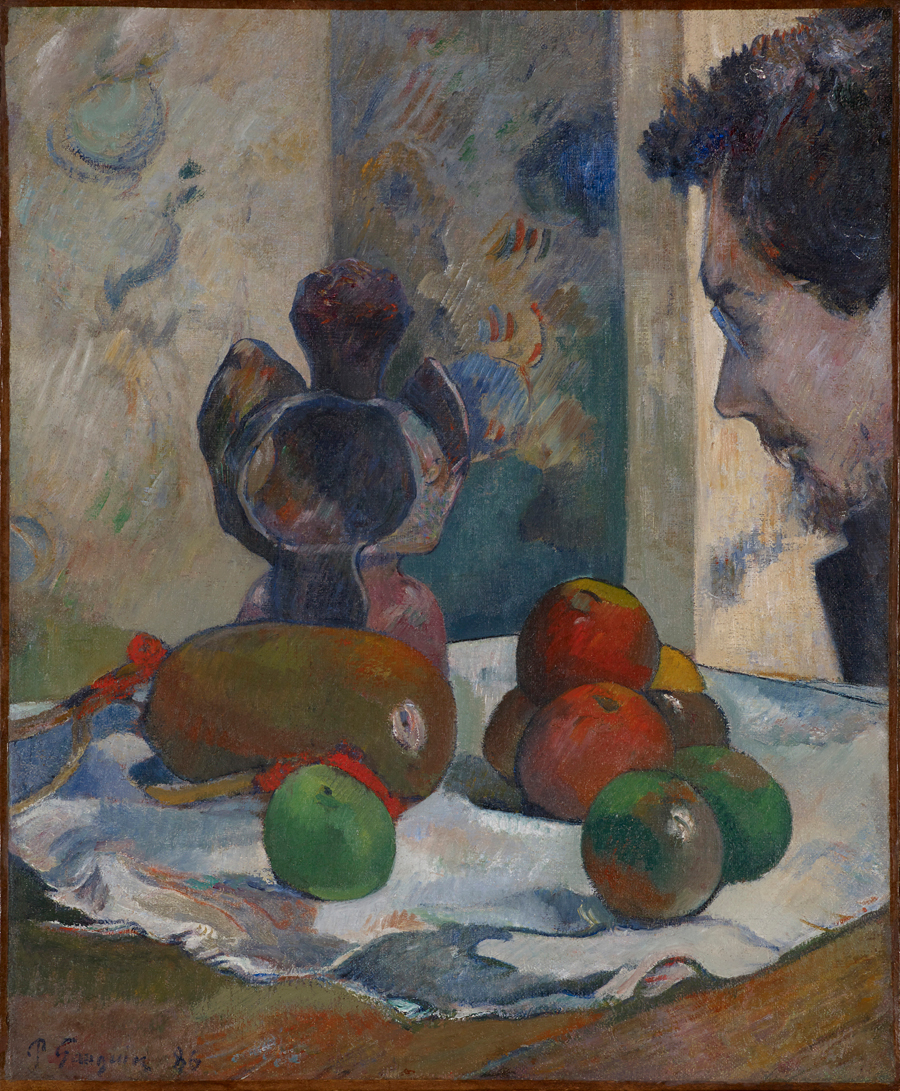Paul Gauguin’s Self-Obsessed Portraits: National Gallery Review
In the first show dedicated to the artist’s portraits, a narcissistic personality emerges
In the first show dedicated to the artist’s portraits, a narcissistic personality emerges

At London’s National Gallery, the first-ever exhibition devoted to Paul Gauguin’s portraits begins with a bang: a room of self-portraits and the announcement that ‘Gauguin was undoubtedly self-obsessed.’ The French post-impressionist depicted himself throughout his lifetime, but rather than offering sobering glimpses into the person behind his painting, he adopts ever-changing guises to channel his ambitions as an artist. In Christ in the Garden of Olives (1889), he assumes the role of Christ on the eve of his betrayal, with fiery red hair and a mask-like face. This is Gauguin the tortured artist, an outsider who suffers for his art.

What happens when an artist takes one of the oldest art forms and repurposes it for his own self-interest? Gauguin’s portraits of fellow artists and writers in Paris and Brittany from the 1880s are less about the characters of others than they are about his own process of art-making. The title Still Life with Profile of Laval (1886) says it all: the focus is on an early ceramic by Gauguin, arranged alongside some apples, while the heavy-lidded artist Charles Laval is relegated to the edge of the canvas. In Still Life with ‘Hope’ (1901) – which the National Gallery describes as a ‘surrogate portrait’ – Vincent van Gogh is entirely absent, merely alluded to by a vase of sunflowers.

In the 1890s, Gauguin travelled to Tahiti to escape the conventions of European society and seek further inspiration for his art. Woman with a Mango (1892) reflects his pleasure in witnessing Polynesian culture: a young girl adopts a dynamic pose, on the verge of smiling, in front of a canary-yellow backdrop. These are perhaps the most striking portraits in the exhibition, but they’re also troubling – a colonial and misogynist fantasy – which Gauguin even appears to acknowledge in the painting Barbarian Tales (1902). Two Polynesians, beautiful and serene, sit tranquilly while a devilish European with green eyes and claw-like toenails crouches behind them.
The Credit Suisse Exhibition: Gauguin Portraits runs at The National Gallery, London, until 26 January 2020.
Main image: Paul Gauguin, Self Portrait with Yellow Christ (detail), 1890-91, oil on canvas, 38 × 46 cm. Courtesy: Musée d'Orsay, Paris ©RMN-Grand Palais (musée d'Orsay) / René-Gabriel Ojéda























